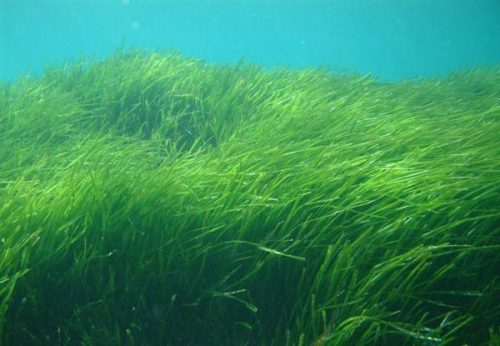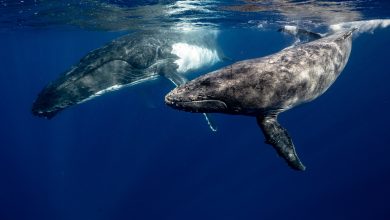Did you know that the Mediterranean Sea produces oxygen? Discover this hidden Amazonian forest

Around the Lérins islands, the Cannes city council is working to protect a precious carbon capture seagrass. This unsuspected heritage does not resist to the anchors of the pleasure boats and actions to safeguard it are necessary, and all that starts with awareness.
What is posidonia?
Who could believe that it is only a shade of blue. A simple little colored contrast that appears under the sun’s rays. The Cannes controllers, experienced in this exercise, are able to identify it by the color of the water alone. When the water is turquoise, they know that underneath it is sand. When the water is dark blue, it is sure that a field of seagrass lies under the waves. It is not for nothing that this bay of the French Riviera is classified Natura 2000 and hopes to obtain a classification as a Unesco World Heritage Site: this meadow of sea grass is often called “carbon catcher” or even “green lung of the Mediterranean”. Indeed, studies have shown (study of the Mediterranean Institute of Advanced Research) that only one square meter of Mediterranean posidonia seagrass produces 14 to 20 liters of oxygen every day!
For celebrities or VIPs like Brad Pitt, sailing around the Lerins Islands allows them to forget the noise of the Croisette. With its monastery, its creeks and its incomparably pure waters, the archipelago is a true haven of peace. The other side of the coin is that this little paradise now attracts a lot of boaters and tourists. So much so that in the middle of summer, up to 1,200 boats can be counted anchored between those mediterranean islands. Experts in marine biology are sounding the alarm: as the number of boats increases, so does their impact on the Posidonia meadows. One can observe furrows in the seabed that plow the seagrass meadows, like so many scars that, year after year, jeopardize the ecosystem. Most of the time, because of the anchors that, if they are removed with a reverse gear, tear off clumps of posidonia. But if the damage is done in a few seconds, the precious marine grass takes years to recover: its horizontal rhizomes grow by 6 centimeters per year, its vertical stems by one centimeter. It also serves as a refuge for fish, which use it as a spawning ground.

The maritime security of Cannes sets up actions
Since 2019, an area is prohibited to boats over 24 m and since 2021, it is even 43 hectares that have been sanctuarized and for which the anchorage is simply prohibited. In addition, an ecological mooring zone has been created with 28 buoys on which boats can moor.
But these are not the only actions, the municipality takes extremely good care of the coastline: the city has equipped itself with robots in order to clean the bodies of water, has set up nets at the mouth of river waters to limit pollution, free pumps for emptying wastewater from ships. Moreover, it is the first city in France to recover dead posidonia to reinject them into the marine environment. Obviously, this has a cost, but in view of the global warming that is taking place, it is worth the effort.







